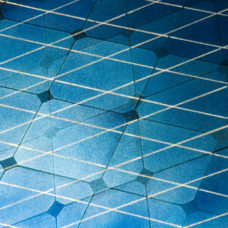The rising level of greenhouse gas emissions has led to renewed calls for intervention. These include more renewable energy options, energy efficiency, as well as carbon dioxide capture and storage.
Unfortunately, the current commercial carbon capture technologies are far from perfect.
They rely on corrosive amines such as monoethanolamine that are energy-intensive. What’s more, these amines also capture a limited amount of carbon from the atmosphere.
Thus, it became necessary to develop a more efficient method for carbon dioxide capture and storage. The researchers at Monash University and the CSIRO did just that.
In a statement about the study, associate professor from CSIRO and Department of Chemical Engineering, Monash University, Matthew Hill said:
“Our research shows the lowest reported regeneration energy calculated for any solid porous adsorbent, including monoethanolamine, piperazine, and other amines.”
In a recently published paper in Cell Reports Physical Science, the scientists described how they achieved the feat.
Using a Magnet-filled Sponge for Carbon Capture and Storage
The researchers developed a sponge-like technology that can capture carbon dioxide from various sources, including air. And they’re calling it M-74 CPT@PTMSP – for now, at least.
The tech uses a Metal-Organic Framework (MOFs) that can be generated at a low energy cost, but with remarkable speed. So, it removes CO2 the same way that induction cooktops do, but with one-third of the energy.
According to the scientists, the absorbent material delivered an energy cost of just 1.29 MJ kg-1CO2. That’s 45 percent below commercially-deployed materials, making it the best CCS efficiency on record.
In other words, the new tech creates a new carbon capture method that we can pair with renewable solar energy to remove excess CO2 from the atmosphere.
Associate Professor Hill noted:
“Essentially, we can capture CO2 from anywhere. Our current focus is for capture directly from the air in what is known as negative emissions technologies.”
MOFs are class compounds with metal ions that form a crystalline material with a larger surface area than any known material.
However, to use them in CCS applications, the material must be easy to fabricate. Also, it must offer excellent stability and performance.



















Comments (0)
Most Recent